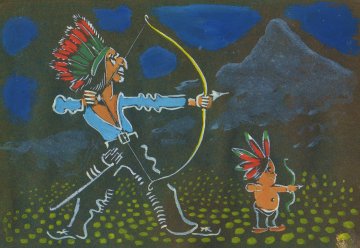Corrections and Additions to
Collected Poems of Mervyn Peake
edited by R. W. Maslen
and published by Carcanet in 2008
As Rob Maslen does not have a site of his own, he suggested that Peake STUDIES might host a page for corrections and additions to the volume of Peake’s Collected Poems that he edited for Carcanet in 2008. So here it is.
Corrections
Page 39: ‘Poem’ was titled ‘The Meeting at Dawn’ when it was first published in the New English Weekly on 30 December 1937.
Page 87: ‘With People, so with Trees’ may have been reworked in the spring of 1948, but a poem with this title was already extant in January 1940, so it could well date from 1939.
Page 149: The title and first line of ‘This field is dim with sheaves’ should read ‘This field is dun with sheaves’.
Page 165: ‘Rembrandt’ can now be dated to 1938, for Peake sent it, along with other ‘Painter Sonnets’ (as he called them) to Sir Edward Marsh for his comments.
Page 174: The first line of ‘Love, I Had Thought It Rocklike’ should read quite simply, ‘I had thought it rocklike’.
Page 177: In the 4th line of ‘For Ever through Love’s Weather...’ ‘north star’ should have initial capital letters: ‘North Star’. Peake’s title for this poem was ‘To Ruth’ (i.e. Ruth Shackle (1903–99) with whom he was having an affair – see PS 13 (October 2013), iii: 9–10).
Page 226: ‘My Malady is this’ can now confidently be attributed to December 1941.
Additions
Discovered in 2017, a poem about the series of Kings from A to Z that Peake illustrated in 1938–39.
KINGS FROM A TO Z
Exactly Twenty Six Kings I met
In the rough, grey realms of Alphabet.
At the season when long leaves twist and fall,
From A to Z, I drew them all.
As they ruled in a dim archaic way
To the murmerous sound of the seas that sway.
And some of them were rather forlorn
When they saw the portraits that I had drawn,
And others were far too highly bred
To show their feelings but smiled instead
At their fingertips, and portentously
Lifted their eyebrows at the sea –
Toyed with their sceptres, and then again
Resumed their ruminative reign.
It was long ago, and my thoughts are blurred,
And all the happenings that occurred
Are drowned, and only my portraits keep
The Kings from sliding away in sleep.
For all the things that their voices said
Are snared [lost]* in the webs within my head.
And all the crumbling region fills with wings
That
darken a shore of lettered things…
May I present my Silent Kings?
* lost is written faintly over the top of snared.
Had he known of them, Rob would have quoted (in the Notes, p.243) Peake’s comments from the dustwrapper of the first edition of The Rhyme of the Flying Bomb:
‘Whilst its central characters, the sailor and the child, are symbolic, this was not consciously thought out (as Mr Peake has confirmed). Asked if he could give a meaning to the poem he has stated that it shows “man’s continuing hopefulness in adversity,” and in this way he is as a child, being ever re-born. “Water, fire and air are elements of this poem, and I have endeavoured to use them as being an integral part of the War. Apart from the brutality of war, there is the tenderness in the unexpected circumstances, and this I have tried to express in the sailor’s attitude to the child.”’
Back to the Peake Studies home page.

